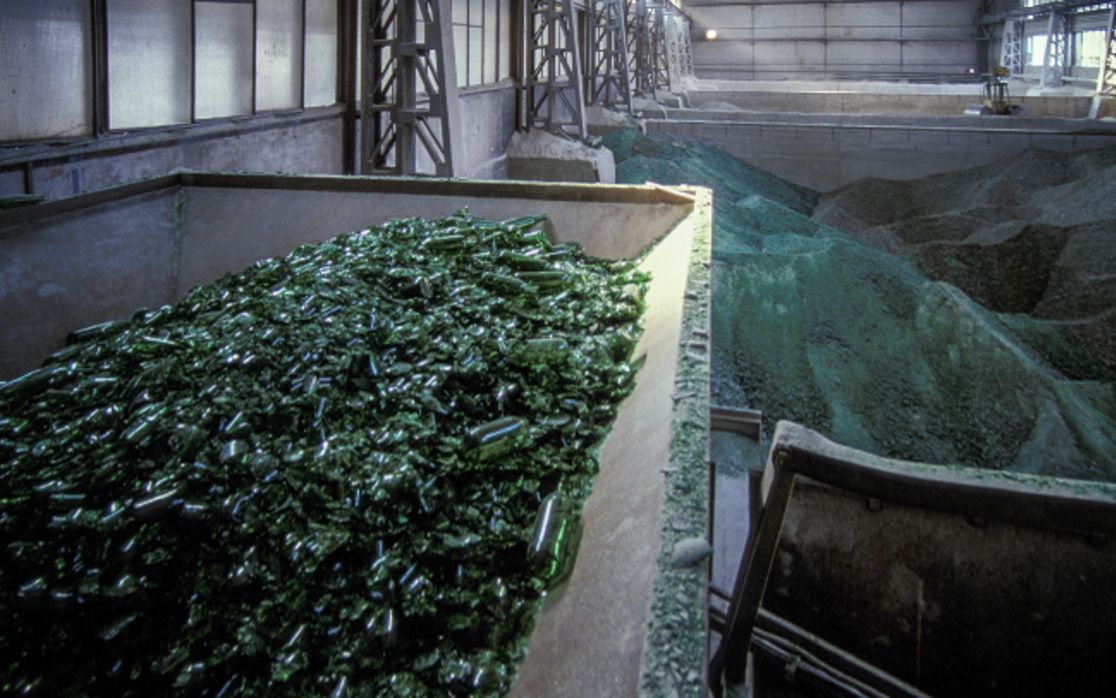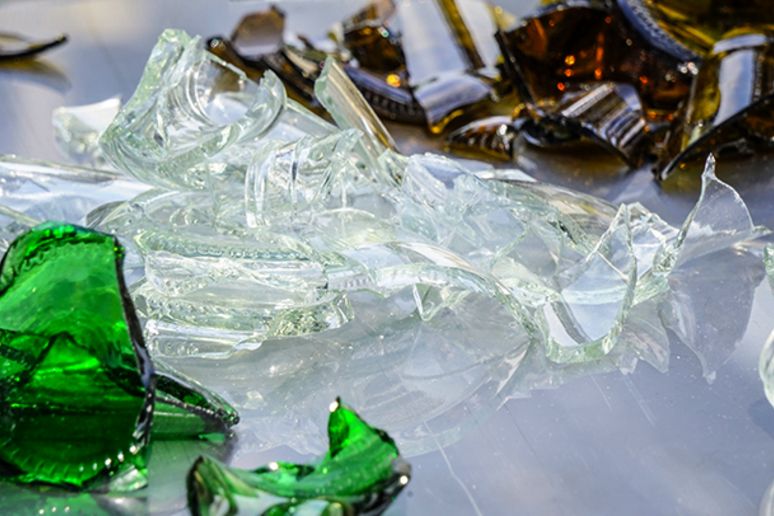Collecting and processing used glass
Since the early 1970s, Vetrorecycling has been making the most of one of the useful properties of glass to help the environment. Glass is a natural material and is one-hundred per cent recyclable without compromising on quality. In 1974, used glass was still being collected by rubbish lorries from outside front doors. Now there are around 30,000 containers for collecting glass in Switzerland.
Our aim: to conserve raw materials
Fully reintegrating raw materials into production beyond the life cycle of the individual bottle was our aim back then, and it still is today.
Recycling saves primary raw materials, avoids waste and reduces CO2 emissions, because in glass production, melting down used glass requires much less energy than melting down primary raw materials such as quartz sand.
Therefore, the higher the proportion of used glass involved in production, the higher the energy-saving effect: for every 10 per cent of used glass we save 3 per cent in energy and 7 per cent in CO2 emissions.
Thanks to you, nature is being given a chance too.
You dispose of your used glass in a container and we’ll take care of the energy footprint.
A team of partners and transporters are tasked with regularly emptying the community containers. Each cullet of glass travels no more than 100 kilometres from one of the more than 25,000 containers to the closest regional temporary storage facility.
The used glass is then transported to the processing plant by rail whenever possible. By having the used glass transported by train, Vetropack Ltd was able to save around 8,000 lorry journeys and avoid 4,356 tonnes of CO2 emissions in Switzerland in 2018 alone.
Putting the flint glass into the pot
Together with our partners, we are constantly making improvements to the way that we collect and process used glass because separating the glass by colour is tremendously important for glass production.
The quality of the collected goods and their processing are crucial for saving energy in the production process. Unsorted cullets can only be melted down into green glass. When producing flint glass, for example, the used glass must consist purely of flint glass. To produce flint and brown glass, you can use up to 60 per cent used glass, and for new green glass this figure can even be increased to 100 per cent.
At the processing plant, staff manually filter out wrong colours, porcelain, ceramics and other foreign objects from the conveyor belt. The glass breaker grinds the cullets until they are the ideal grain size for the melting process. In the screener, more foreign materials and oversized grains of glass are removed. Metal and ceramic components are extracted using a magnetic drum and metal and ceramic separators while the extraction system removes paper and any other light materials. After a final check, the prepared used glass is moved on to the glass production.
Saving energy and avoiding waste
Within a relatively short period of time, glass recycling has lead to a significant reduction in environmental pollution. Thanks to glass recycling and the boost in technological innovation associated with this, energy consumption, exhaust air emissions and waste have decreased by around 75 per cent in the last 25 years.
Any questions?
Do I have to wash bottles and jars thoroughly before I put them in a used glass container?
In principal, it is sufficient to just rinse out the bottles and jars with cold water. You can leave the paper labels on the jars as they burn in the extremely high temperatures of the melting furnace.
A real problem is food residue in the jars as they attract a lot of insects around the containers, especially in summer. This may be unpleasant for people but for bees it is actually dangerous as they can become infected with foul brood through spores in honey jars. Outbreaks of this disease can eradicate entire bee populations.
To protect bees, always wash honey jars before throwing them away.
Why do I have to sort used glass by colour?
To produce flint glass, the proportion of used glass incorporated must consist purely of flint cullets and the used glass that goes into producing brown glass must be entirely brown cullets. In order for all the collected goods to be integrated into the glass industry as a raw material for making new glass packaging, it must be sorted according to colour.
The issue of recyclability is also the reason why crystal glasses and window glass should not be put in used glass containers. Their chemical composition is different to that of glass packaging.
And red, blue and yellow bottles – what should I do with those?
All coloured bottles and glass packaging belong in the green glass category.
What happens to lids and caps?
Aluminium lids are reused and plastic lids are incinerated.
Why should I actually collect my used glass?
Glass is a natural material and moves in a completely closed material cycle. This means it can often be moulded into new bottles and jars an endless number of times without compromising on quality.
Complete recycling produces less waste. Recycling used glass has hugely improved the environmental footprint of glass production and ultimately, melting down used glass reduces the demand for energy and conserves primary raw materials. From an environmental standpoint, recycling is the right choice.


